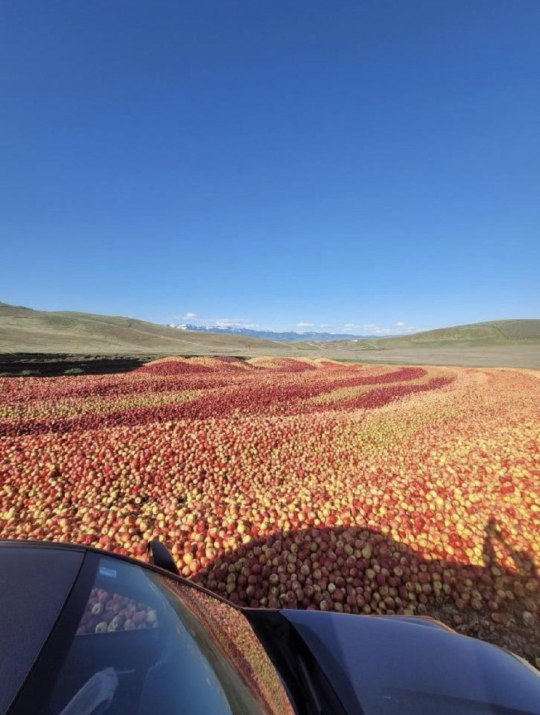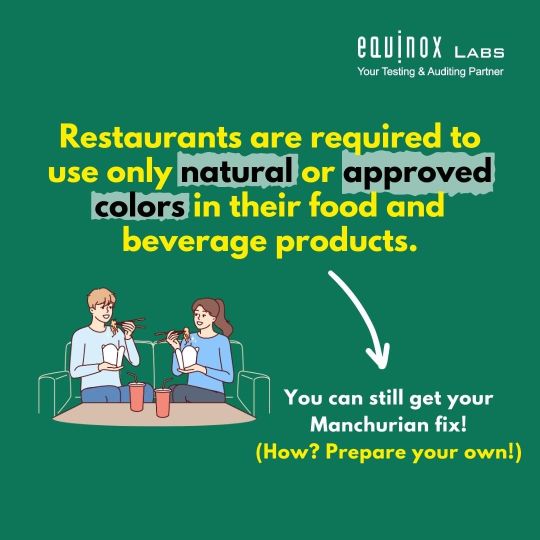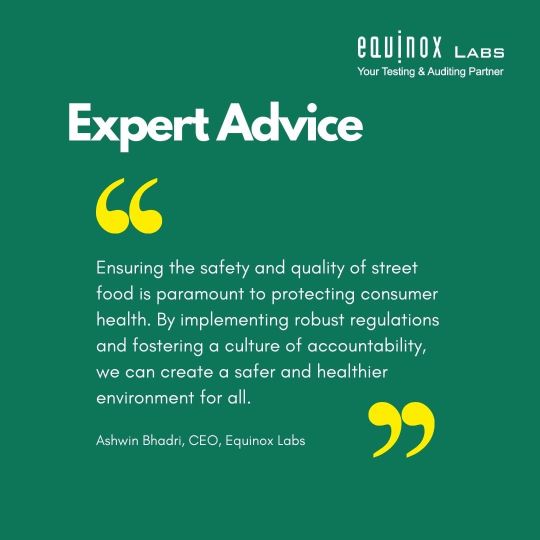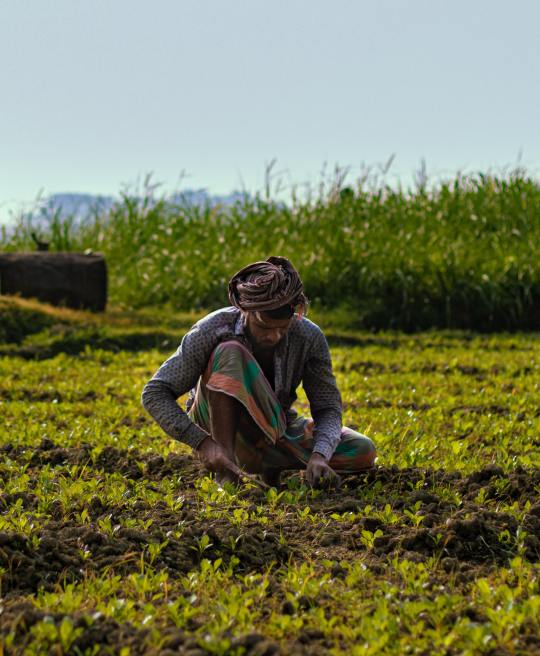#FoodSecurity
Explore tagged Tumblr posts
Text
My dream garden … 🪴
youtube
#scotland#lifestyle#outdoors#adventure#handmade#family#travel#homesteading#craft#countrylife#garden#gardening#kitchen garden#growyourown#grow your own food#self sufficient living#self sufficiency#simplelife#simple things#simple living#simple life#plants#fruit#vegetables#foodsecurity#countryliving#countrygirl#rurallife#rural#food
11 notes
·
View notes
Text

This is what happens to all of the unsold apples
#This is what happens to all of the unsold apples#fundamental law of capitalism...#wasteland#waste management#zero waste#wastewatertreatment#food waste#food stim#foodstagram#foodsafety#foodsecurity#foods#foodie#foodporn#food photography#foodgasm#food#food should be free#fruits#fruits basket#forbidden fruit#fruits and vegetables#fruit salad#fruit#appless rp#applesauce#appless roleplay#apples never fall#apple seeds#apples
18 notes
·
View notes
Text
AN OPEN LETTER to THE U.S. CONGRESS
Support the Food Date Labeling Act (H.R. 3159 and S. 1484)
730 so far! Help us get to 1,000 signers!
Food waste is a huge problem in our country, so I am writing to ask that you support the Food Date Labeling Act (H.R. 3159 and S. 1484).
This bill would clear up confusion about “best-used-by” and other labels by establishing requirements for quality and discard dates in food packaging. Currently, there is no federal regulation for date labels. This means that consumers, confused by different types of labels, end up discarding edible food.
Food waste results in households wasting money and exacerbates climate change. Food waste is responsible for about 6% of total US GHG emissions. The nonprofit ReFED found that reducing food waste could generate $73 billion in financial benefit, recover the equivalent of 4 billion meals for food insecure individuals, save 4 trillion gallons of water, and avoid 75 million tons of greenhouse gas emissions annually in the US.
Thank you for your support of legislation that would enable consumers to save money while mitigating climate change.
▶ Created on April 5 by Jess Craven · 729 signers in the past 7 days
📱 Text SIGN PCYWXY to 50409
🤯 Liked it? Text FOLLOW JESSCRAVEN101 to 50409
#JESSCRAVEN101#PCYWXY#resistbot#green living#food waste#foodwaste#congress#support#foodlabeling#climatechange#legislation#datelabels#activate your activism#federalregulation#open letter#environment#sustainability#reducewaste#consumerprotection#bill#supportlegislation#greenhousegas#foodsecurity#savefood#wastemanagement#GHGemissions#foodpackaging#bestusedby#discarddates#consumerawareness
9 notes
·
View notes
Text
🌾✨ A Historic Moment for Pakistan's Agriculture! 🇵🇰

Did you know that in the first two months of FY25, Pakistan's rice exports surged by 98.58%? 📈🍚 This leap, driven by an impressive increase in basmati rice exports, showcases the resilience and potential of our farmers.
Join us in celebrating this achievement and understanding the factors that contribute to our growing agricultural sector. Let's keep the momentum going!
#pakistannews#todaynewspakistan#news#PakistanRice#Basmati#Agriculture#SuccessStory#Exports#FoodSecurity
3 notes
·
View notes
Text
Market Report on Vertical Farming Products: Understanding Size, Share, and Growth Trajectories
The global vertical farming market size is expected to reach USD USD 24.95 billion by 2030, according to a new report by Grand View Research, Inc. It is expected to expand at a CAGR of 20.1% from 2023 to 2030. Increased use of Internet of Things (IoT) sensors for producing crops is likely to spur market demand over the forecast period. Information obtained from the sensors is stored on the cloud and analyzed to perform the required actions. The growing automation in agriculture and increasing use of big data and predictive analytics for maximizing yields are also likely to drive the market.
Vertical farming is effective in ensuring stability in crop production and maintaining reliability even in adverse climatic conditions. It provides multiple benefits over the traditional farming technique, such as less use of water, the lesser need for agrochemicals, and low dependence on agricultural labor. Vertical farming makes use of metal reflectors and artificial lighting to maximize natural sunlight.
Genetically modified organisms and the environmental and health effects of pesticides and other non-natural substances that are used for increasing agricultural production have encouraged consumers to adopt organic foods. According to the Organic Trade Association, the U.S. organic industry sales increased by around 5% in 2019 owing to the increased investment in infrastructure and education. As per the Organic Foods Production Act of 1990, the handlers and growers of organic products need to comply with the regulations.
Artificial lighting helps in extending the hours of natural daylight, which further increases the health, growth rate, and yield of the plants. Artificial lighting such as high-pressure sodium lighting and LED lighting can extend the availability of crops (throughout a season). LED lighting systems produce a dual-band color spectrum and generate low heat. They are anticipated to witness significant growth over the forecast period.
A hydroponic system is a method of growing plants without soil. A hydroponic system eliminates the need for pesticides and artificial ripening agents and helps in producing nutritionally-rich vegetables. However, factors such as high initial investment and fewer crop varieties are likely to restrain the market growth.
For More Details or Sample Copy please visit link @: Vertical Farming Market Report
Vertical Farming Market Report Highlights
The escalating production of biopharmaceutical products is anticipated to drive the market
The shipping container segment accounted for the largest market share in 2022. Shipping container-based farming uses less water than traditional farming with drip irrigation. Shipping containers can be easily stacked, modified, recycled, and refurbished at a lower cost. Additionally, the excess availability of unused shipping containers across the region will likely influence segment growth over the forecast period
The hardware segment accounted the largest market share in 2022. The hardware plays a significant role in maintaining the environment of the indoor farms. The segment is further categorized into climate control systems, lighting systems, sensors, and irrigation systems, which enables the cultivation of indoor-grown crops
The fruits vegetables, & herbs segment is also expected to have considerable growth over the forecast period. The increasing cultivation of commonly grown fruits and vegetables in greenhouses is driving the segment growth. Crops grown in vertical farming provide maximum profit to companies involved in their cultivation
Based on offering, the climate control segment is expected to witness high growth over the forecast period as the growth of crops can be controlled by monitoring and adjusting the concentrations of minerals
By growing mechanism, the aeroponics segment is expected to observe considerable growth over the forecast period as the aeroponics facilitate fast growth in plants (under normal conditions)
The North American regional market is expected to witness significant growth over the forecast period owing to the expansion of small-scale, commercial vertical farms
Gain deeper insights on the market and receive your free copy with TOC now @: Vertical Farming Market Report
We have segmented the global vertical farming market report based on structure, growing mechanism, crop category and region.
#VerticalFarming#UrbanAgriculture#SustainableFarming#AgTech#Hydroponics#Aeroponics#SmartFarming#ControlledEnvironmentAgriculture#FoodSecurity#GreenTech#UrbanFarming#CropProduction#InnovativeAgriculture#SustainableDevelopment#ClimateSmartAgriculture#AgriTechTrends#VerticalFarmingGrowth#AgriculturalInnovation#FutureFarming#ResourceEfficientFarming
2 notes
·
View notes
Text

Sha’Carri Richardson reveals her favorite foods in Dallas, including Oak Cliff
See more
#sha’carri richardson#foods#food stim#foodsafety#foodstagram#foodsecurity#foodies#lunch#foodmyheart#breakfast#dinner
2 notes
·
View notes
Text










All Food Testing Services in Kolkata, West Bengal
Description:- All food testing services in and around Kolkata. NABL accredited and well equipped lab for food microbial testing, nutritional labeling and shelf life testing.
#EquinoxLabs#CommitmentToSafety#BIScertification#FoodManufacturing#Fssaiupdates#Fssailicense#FoodHandlers#FoodSafety#SafeFood#FoodTesting#worldfoodsafety#foodindustry#foodsecurity#foodquality#fssairegistration#horeca#foodbusinesses#Food testing labs in Kolkata#Food testing in Kolkata#Food quality testing in Kolkata#Food Auditing labs in Kolkata#NABL accredited labs in Kolkata#Nutritional labeling in Kolkata#Food nutrition testing in Kolkata#Shelf life analysis in Kolkata#Shelf life testing labs in Kolkata#Food testing Service in Kolkata#FSSAI approved labs in Kolkata#Food testing laboratories in Kolkata#food testing laboratory in Kolkata
2 notes
·
View notes
Text

Unveiling the Plight: The Negative Impact of Seed Theft on Indigenous Communities
The theft of seeds from indigenous communities has far-reaching consequences, posing a grave threat to their cultural identity, food security, and sustainable practices. In this exploration, we shed light on the alarming repercussions of seed theft, underscoring the urgent need to address this issue. From the loss of traditional crops to the disruption of ecosystems and the erosion of indigenous rights, the impacts are both profound and multifaceted. Together, we must stand against seed theft and advocate for the preservation and empowerment of indigenous communities.
Effects of Seed Theft on Indigenous Communities:
Loss of Cultural Heritage: Seed theft undermines indigenous communities' ability to preserve their cultural practices and pass down traditional knowledge.
Threat to Food Security: The theft of indigenous seeds disrupts local food systems, reducing access to nutritious and culturally significant crops.
Erosion of Biodiversity: Seed theft contributes to the loss of diverse plant varieties, weakening ecosystems and diminishing resilience in the face of environmental challenges.
Disruption of Livelihoods: Indigenous farmers face economic hardships as their seed sovereignty is compromised, affecting their self-sustainability and economic independence.
Violation of Indigenous Rights: Seed theft infringes upon the rights of indigenous communities to control and protect their traditional seeds, exacerbating historical injustices.
Together, let us raise awareness about the negative impact of seed theft on indigenous communities and work towards promoting justice, preservation, and empowerment.
#SeedTheft#IndigenousRights#CulturalHeritage#FoodSecurity#BiodiversityLoss#SustainableFarming#EnvironmentalJustice#IndigenousEmpowerment#TraditionalKnowledge#PreservingHeritage
4 notes
·
View notes
Text
https://lnkd.in/eP7s6ZZb https://lnkd.in/eRNmpWNP
i) Explain how and why the Muskrat Falls lower Churchill industrial project, Labrador, NL, Canada is a valid, reliable example of unrealistic hydro 'megadam', methane-generating, methyl-mercury, neurotoxic poison-producing, corrupting, colonial, constitutionally corrosive construction.
ii) An unrealistic project that exists within shameful British Crown, Canadian, NL Provincial and Federal ‘legal’ mismanagement tradition.
iii) A contradictory unethical, immoral, constitutionally corrosive, criminal jurisdiction.
iv) A capitalist, corporate, fossil fuel unsustainable development.
v) Enforced by corrupt criminal justice systems, immoral failed leadership UK CA: a root cause of our planet's cost of living climate crisis.
vi) Rapid disinvestment and no new investment is imperative.
vii) Why not protect our sacred waters by draining, mitigating such unconscionable Muskrat Falls megadam reservoirs without delay and revoke similar unsafe hydro megadam operating licences worldwide to prevent further ecological, ecocidal and climatic suicide?
viii) No such new fossil fuel, megadam methane developments should be licensed - assisting Mother Earth stay within 2 degrees Centigrade average global warming by rapidly cutting, rapidly accelerating, atmospheric greenhouse gas emissions as soon as possible. #AI #OpenSource #ChatGPT #Perplexity Llewelyn Pritchard MA 17 July 2023
#BusinessCorruption#CostOfLivingClimateCrisis#Canada#Capitalism#ClimateGenocide#ColonialLaw#ConsultationIsNotConsent#CorruptColonialCrownCorporations#CulturalGenocide#CulturalHeritage#DirtyHydroPower#EcologicalDestruction#EcologicalFramework#Energy#FailedLeadership#FederalGovernment#Food#FoodContamination#FoodSecurity#FreePriorInformedConsent#Government#GrandRiverLabrador#Health#HydroElectricDevelopment#HydroElectricPower#HEP#ImmoralLeadership#IndependentResearch#Industry#Innu
2 notes
·
View notes
Link
Explore the challenges of food security and planetary health with Geohoney. Discover solutions to navigate these pressing threats together. Join us now!
2 notes
·
View notes
Text
Urgent Call to Action: Help Fight Hunger in Sudan
The people of Sudan are facing a severe hunger crisis. Millions are struggling to access basic food and nutrition. Your support can make a real difference in saving lives and alleviating suffering.
Can you donate $10, $20, or $50 to help provide emergency food assistance? Every contribution, no matter how small, can help feed a family in desperate need.
Please share this message to raise awareness about the situation in Sudan. Together, we can make a meaningful impact and bring hope to those facing food insecurity.
Thank you for your compassion and generosity!
£655,710 raised
£800,000 goal

#SudanHungerCrisis#FeedSudan#SudanFamine#SudanHumanitarianAid#EndHungerInSudan#SudanFoodCrisis#SupportSudan#SudanEmergency#SudanReliefEfforts#SudanAid#SudanFoodInsecurity#HelpSudan#SudanNeedsFood#SudanHunger#SudanFoodShortage#SudanNutrition#SudanMalnutrition#SudanFoodAssistance#StandWithSudan#SudanHumanitarianCrisis#donations#altruism#FightHunger#HumanitarianAid#EmergencyRelief#FoodSecurity#SudanCrisis#EndHunger#GlobalHunger#SaveLives
40K notes
·
View notes
Text
An open letter to the U.S. Senate
Support legislation that reduces hunger & food insecurity for students.
746 so far! Help us get to 1,000 signers!
Ensuring that all students are hunger-free and ready to learn is very important to me. On September 18th, the Senate Agriculture Subcommittee on Food and Nutrition heard from the Food Research & Action Center about the important role the federal child nutrition programs play in supporting student nutrition, health and learning. I urge you to cosponsor the following legislation that would strengthen and expand these important programs.
- Universal School Meals Programs Act (S.1568)
- School Hunger Elimination Act (S.4525)
- Nutrition Red Tape Reduction Act (S.4523)
Thank you in advance for prioritizing the well-being of our nation’s children and supporting legislation that reduces hunger and food insecurity for students.
▶ Created on October 2 by Jess Craven
#jesscraven101#PXLFAL#HungerFreeSchools#FoodInsecurity#ChildNutrition#SchoolMeals#StudentHealth#UniversalMeals#NutritionPrograms#FoodJustice#HealthyStudents#EducationEquity#NutritionAccess#SupportSchoolMeals#LegislationForChildren#EndChildHunger#HealthyEating#FoodForLearning#HungerElimination#ChildWellBeing#AdvocateForChange#CosponsorLegislation#HealthySchoolMeals#FoodResearchActionCenter#NutritionPolicy#SenateSupport#CommunityHealth#FoodSecurity#FederalNutritionPrograms#SupportOurStudents
2 notes
·
View notes
Text
🌱 Unlocking the Future of Farming: Microbial Biomolecules as the Backbone of Sustainable Agriculture
By Hafiz Muhammad Husnain Azam Researcher, Brandenburg University of Technology Cottbus-Senftenberg 📘 Published 🔗 Read Full Chapter on ScienceDirect
The Challenge: Feeding a Planet of 9 Billion
With the global population set to surpass 9 billion by 2050, the agricultural sector faces unprecedented pressure to produce more with less—less land, less water, and fewer chemical inputs. Traditional farming models are no longer sustainable in the face of soil degradation, climate volatility, and resource scarcity.
So, what’s the solution?
Enter microbial biomolecules—the unsung heroes of ecological farming.
Microbial Biomolecules: Nature’s Bioengineers
Our newly published chapter explores how microbial biomolecules can redefine the future of farming through eco-friendly innovation. These naturally occurring compounds, produced by beneficial microorganisms like PGPR (Plant Growth-Promoting Rhizobacteria) and mycorrhizal fungi, offer scalable, cost-effective alternatives to chemical fertilizers and pesticides.
🔬 Key Contributions of Microbial Biomolecules:
Biofertilization: Enhance nutrient availability (e.g., nitrogen, phosphorus) via microbial solubilization and fixation.
Biocontrol: Suppress plant pathogens through natural antibiotics and siderophores, minimizing reliance on synthetic pesticides.
Phytohormone Production: Stimulate crop growth via microbial synthesis of IAA, gibberellins, and cytokinins.
Abiotic Stress Resistance: Improve plant tolerance to drought, salinity, and extreme temperatures.
These applications not only promote healthier crops but restore soil vitality and biodiversity, aligning with the UN SDGs (Sustainable Development Goals).
Why This Matters for Developing Countries
In regions grappling with resource limitations, microbial technologies present a low-input, high-impact solution. From smallholder farmers in sub-Saharan Africa to rain-fed agriculture in South Asia, microbial biomolecules can empower local agriculture, improve yields, and enhance livelihoods—without compromising environmental integrity.
A Sustainable Path Forward
This research underscores a fundamental shift: sustainability is not an option—it’s a necessity. Microbial biomolecules provide a scientifically validated pathway to sustainable agriculture, offering a blend of productivity, environmental stewardship, and long-term resilience.
Join the Conversation
I invite scholars, agritech innovators, policymakers, and sustainability advocates to explore our findings. Let’s reimagine agriculture together—rooted in science, powered by nature.
📖 Read the full chapter: ScienceDirect – Applications of Microbial Biomolecules
https://doi.org/10.1016/B978-0-323-99476-7.00010-7
https://go.nature.com/4jpFDIF
💬 I welcome your insights and collaboration opportunities. Let’s advance the dialogue on ecological innovation and food security.

#SustainableAgriculture#MicrobialBiotechnology#Biofertilizers#Biopesticides#AgriTech#SoilHealth#PlantMicrobiome#ClimateSmartAgriculture#GreenBiotechnology#FoodSecurity#Agroecology#RegenerativeFarming#OrganicFarming#EnvironmentalScience#AgriculturalInnovation#UNSDGs#Biocontrol#PlantGrowthPromotion#ScienceForSustainability#ZeroHunger#FarmToFuture#SoilMicrobiome#NatureBasedSolutions#PrecisionAgriculture#EcologicalFarming#SmartFarming#GlobalFoodSystems#SustainableFarmingPractices#MicrobialSolutions#AgriculturalResearch
1 note
·
View note
Text
Agriculture Packaging Market Drivers Fueling Growth Across Global Supply Chains and Sustainability Goals
The agriculture packaging market is undergoing significant transformation as global agriculture adapts to rising demands, sustainability standards, and technological advancements. From improving product safety to enhancing distribution efficiency, several key drivers are shaping the future of agricultural packaging. These factors are not only increasing the market's value but also redefining how agricultural produce is protected, preserved, and presented across the supply chain.

1. Rising Demand for Food Security and Safe Distribution
With the global population steadily increasing, there is a growing need for secure and efficient food distribution. Agriculture packaging plays a critical role in maintaining food safety from farm to consumer. The use of durable and protective materials reduces spoilage and contamination, ensuring that products retain quality during storage and transport. As consumers demand fresher, safer food, reliable packaging solutions become indispensable.
2. Shift Toward Sustainable and Eco-Friendly Materials
Sustainability has emerged as a central theme in the agriculture sector. Governments, organizations, and consumers alike are encouraging the shift from conventional plastic-based packaging to biodegradable and recyclable alternatives. This movement is driven by growing awareness about environmental issues and strict regulations on plastic use. Manufacturers in the agriculture packaging market are increasingly adopting plant-based films, compostable materials, and reusable containers to align with green initiatives.
3. Growth in E-Commerce and Global Agricultural Trade
The expansion of global trade and the rise of e-commerce in fresh produce have added complexity to agricultural logistics. Proper packaging ensures that fruits, vegetables, grains, and other perishables arrive in optimal condition, even across long distances. As cross-border trade grows, the demand for robust and compliant packaging solutions that meet international standards is increasing rapidly. This is further pushing innovation and growth in the market.
4. Technological Advancements in Packaging Design
Innovations in packaging technology are significantly contributing to the market’s growth. Modified atmosphere packaging (MAP), vacuum-sealed solutions, and smart packaging with sensors are becoming more prevalent. These technologies help in extending shelf life, monitoring freshness, and providing real-time data on storage conditions. Such advancements not only reduce food waste but also enhance transparency and traceability in the supply chain.
5. Changing Consumer Preferences and Retail Demands
Modern consumers are more informed and concerned about the source and safety of their food. Packaging that provides detailed labeling, including origin, nutritional content, and safety certifications, is gaining popularity. Retailers are also demanding innovative packaging that improves shelf appeal and supports branding. This shift in consumer behavior is pushing agricultural producers to invest in high-quality, informative, and attractive packaging.
6. Government Regulations and Quality Compliance
Regulatory bodies across the globe are imposing stricter guidelines on agricultural packaging materials and practices. These regulations are aimed at ensuring food safety, reducing environmental impact, and promoting fair trade. Complying with these standards requires continuous improvement in packaging design and material selection, which in turn stimulates growth and innovation within the market.
7. Focus on Reducing Post-Harvest Losses
Post-harvest losses remain a major concern, particularly in developing regions. Efficient packaging helps minimize these losses by preserving the integrity of produce during handling, transport, and storage. Innovations like ventilated crates, moisture-resistant bags, and tamper-proof containers are helping farmers and suppliers extend the usability of their products. As more governments focus on food preservation, investment in agricultural packaging is likely to increase.
8. Rise in Contract Farming and Agribusiness Models
The emergence of organized farming and agribusinesses has streamlined the production and distribution processes. These enterprises often operate at larger scales, requiring standardized and scalable packaging solutions. Contract farming, in particular, emphasizes traceability, product differentiation, and brand visibility—all of which rely heavily on effective packaging.
Conclusion
The agriculture packaging market is expanding due to a variety of interconnected drivers—ranging from consumer behavior and environmental priorities to technological innovations and international trade. As agriculture evolves to meet modern demands, packaging remains at the heart of this transformation. Market participants who prioritize sustainability, compliance, and innovation are well-positioned to thrive in this rapidly changing landscape.
0 notes
Text
Stay updated on the latest developments in agriculture including farming techniques, agri-tech innovations, government policies, and market trends. Our coverage spans organic farming, precision agriculture, crop science, and sustainable practices. Learn about new technologies transforming traditional farming, global food security challenges, and opportunities in agribusiness. Essential reading for farmers, agri-entrepreneurs, policymakers, and anyone interested in the future of food production and rural economies worldwide.
0 notes
Text
samli drones
Drones once empowered farmers to increase yields and cut costs. But rising drone warfare and export restrictions are jeopardizing their availability. Learn how this global issue is putting food security and agricultural innovation at risk — and what we can do about it.
📌 Save this pin & read the article now 👉
Store link: https://samliglobal.en.alibaba.com/
Zhongshan Samli Drones Co. Ltd

CONTACT US
WhatsApp: +86 152 1870 3002
We chat: Samli 2022
mail address: info@samliglobal.com
#drone technology#sustainable farming#agritech#agriculture#farmtech#crop management#precision agriculture#digital farming#agriculture drone#drones#real-time crop health tracking#prices are rising#PrecisionAgriculture#AgriTech#DroneTechnology#FoodSecurity#DronesInAgriculture#SmartFarming#SustainableFarming#AgTechNews#AgriInnovation#FarmingTech#DroneConflicts#ExportBans#AgriDrones#DroneWars#Agriculture2025#FarmTech#AgriStartups#DroneRegulations
0 notes